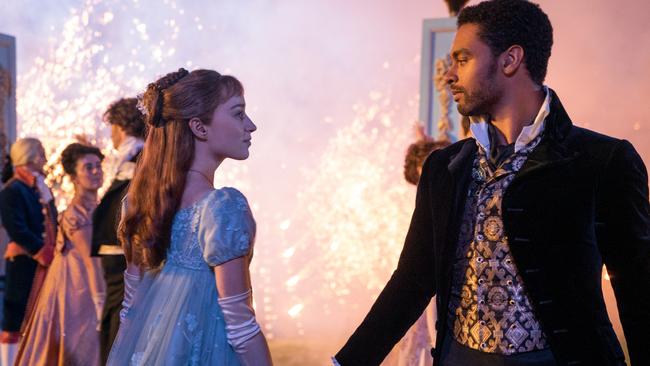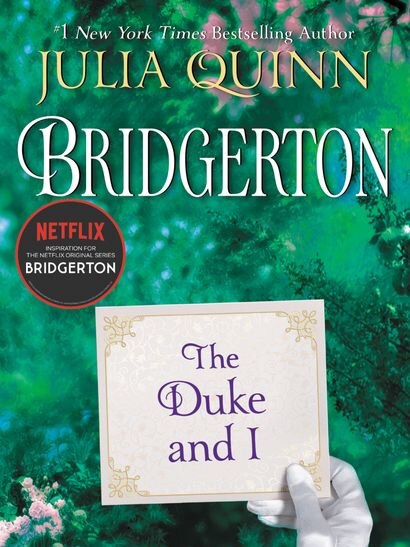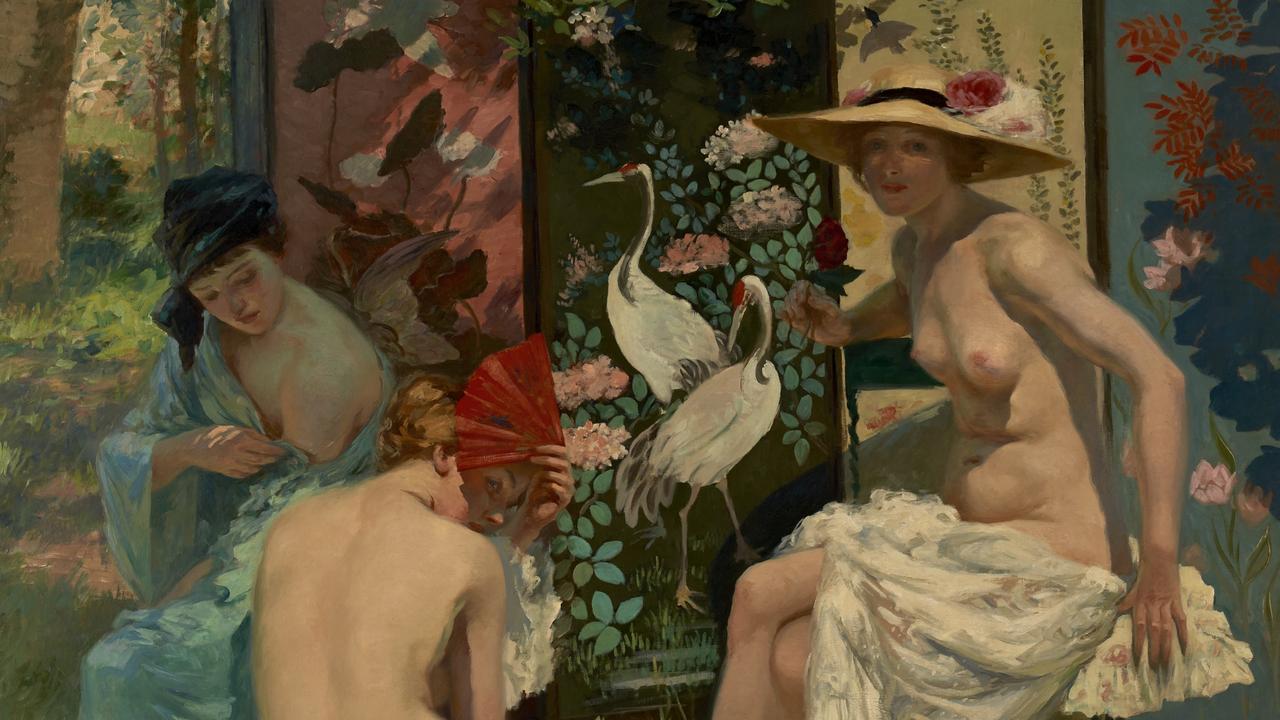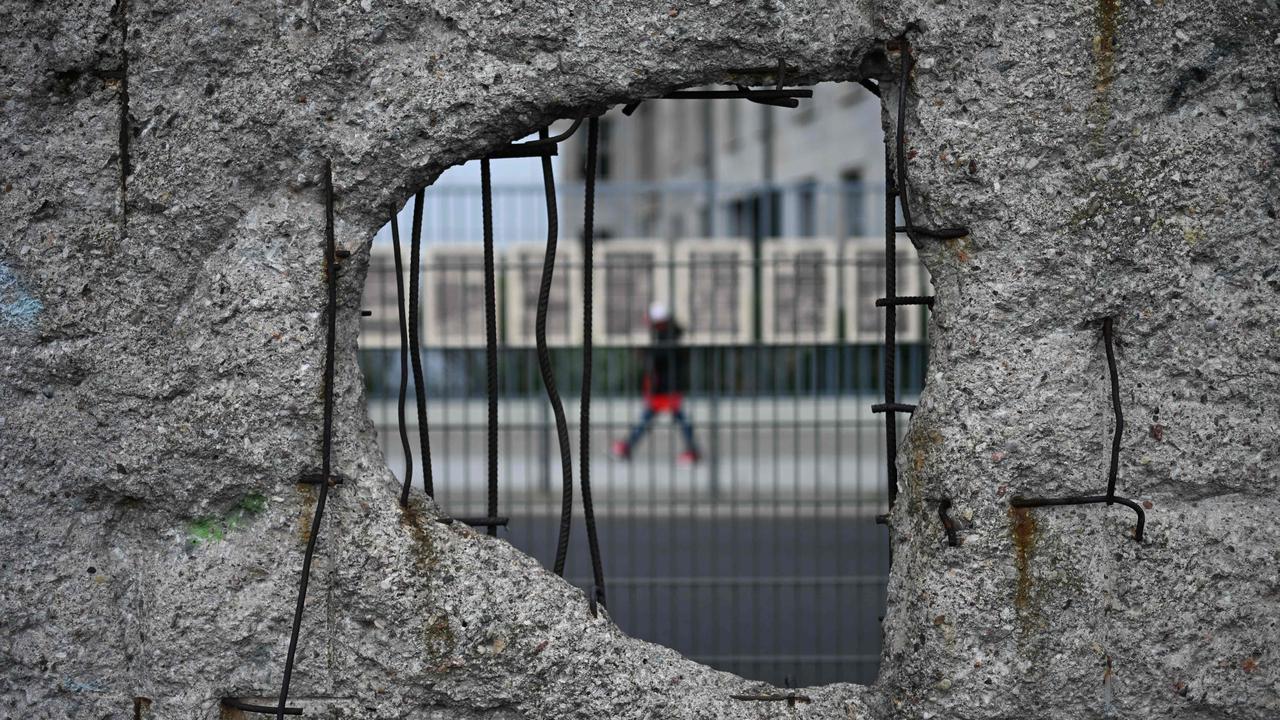Julia Quinn’s Bridgerton: The Duke & I an undemanding romance novel with a spoonful of fantasy sex
Bridgerton, the book, proves as hot, heavy and handsy as the Netflix series.

As a boxing manual, Julia Quinn’s Bridgerton: The Duke & I is dangerously misleading. The novel’s earliest fight scenes – two one-punch attacks on the drunken Nigel Berbrooke – display a shocking ignorance of the mechanics of the sweet science.
When the heroine, Daphne Bridgerton, launches the first assault, she crudely telegraphs her intentions by pulling back her right hand before landing “a surprisingly effective punch on Nigel’s jaw”.
Winding up the punch would have diminished rather than increased its power – notwithstanding this fact, Daphne delivers a knockout blow.
Nigel’s arms flail in the air while his legs slide out from under him, as if Nigel’s brain is located in his chin.
Moments later, he wakes up, with an “already darkening” bruise.
The tremendous force that Daphne would have needed to generate to accomplish this strike would have shattered the knuckles of many professional fighters. (Most Bridgerton readers will surely remember Mike Tyson’s 1988 street brawl with Mitch Green, which left the world heavyweight boxing champion with a fractured hand and forced him to postpone a title bout with Frank Bruno.)
But Daphne is made of sterner stuff, as Quinn would no doubt write.
The luckless Nigel is then attacked by the hero, Simon Basset, who lands another “stunningly powerful blow” to his chin which, once again, knocks Nigel out – rather than breaking his jaw and Simon’s hand.
However, a pedant might argue that The Duke & I is not primarily a book about boxing.
The plot is original and unpredictable. Witty, attractive Daphne is an eligible noblewoman in Regency England, who views her suitors with distaste (and, in the case of Nigel, meets their advances with murderous violence). While assaulting Nigel, Daphne meets dashing, handsome Simon, an eligible nobleman who does not want to get married either. Daphne and Simon make a pact to behave as if they are courting in order to ward off their admirers.

Anything can happen from this point. For example, Daphne might choose to pursue a career in prize-fighting. Simon might turn out to be a time-travelling cyborg. The couple might find themselves kidnapped by aliens and transported to another planet where their bodies are dissected and cloned.
Or they might, after a series of tragicomic mishaps, discover that they have been in love with each other all along, then get married, have children and live happily ever after. (Spoiler alert: one of these scenarios is the actual denouement of The Duke & I.)
The Duke & I was initially published in the US in 2000. It is the first in a series of eight novels and has recently been reissued with additional material to tie in with the successful Netflix show, Bridgerton. The new sections comprise a “Second Epilogue” and a “Behind the Book” essay, in which Quinn explores the magic of the creative process with the same depth of insight that she brings to bear on the discipline of bare-knuckle boxing.
As a writer, Quinn does not always achieve an ambience of linguistic authenticity. In her word picture of life in 1813, she has Daphne’s mother, Violet, going into “outraged employer mode” and Daphne telling Simon that she “fancies” him. Several of Quinn’s comic lines sound as if they come from the 1970s rather than the 19th century.
For its sensibility, The Duke & I seems to draw heavily on “classic” British television such as Upstairs Downstairs and The Duchess of Duke Street.
This influence is particularly evident in both the one-note caricatures that make up the servants’ characters (the nurse is loving, the housekeeper loyal, the butler aloof) and the exaggerated gestures to which the entire ensemble is prone. Indignant characters stand with their fists planted on their hips, like pantomime players. Men and women constantly cock their heads, roll their eyes and arch their brows.
Daphne alone cocks her head impatiently, thoughtfully, mischievously, self-deprecatingly, coyly, while smiling and “with her mouth twisted into what could only be described as a scolding grin”.
At one point, Daphne tilts her head sarcastically as her eyes roll upwards, which would have made her look dead.
Violet, meanwhile, shakes her head as she rolls her eyes. This is almost impossible. I know, because I just tried it for a few minutes. Either the head rolls with the eyes, or the eyes stay in place while the head turns from side to side. In any case, practising the move made me feel a bit queasy and I would not recommend it to other readers. (No, stop it! Now!)
In one way (and probably only one way) The Duke & I is like Donald Trump’s presidency of the United States, in that a parody of the thing would be indistinguishable from the thing itself. This is particularly true of Quinn’s sex scenes: “His hands slipped under her, cradling her derrière, pressing it up against his arousal. ‘Tonight,’ he whispered, his voice hoarse and hot in her ear, ‘I will make you mine.’ … her legs snaked around his, pulling him ever closer to the cradle of her femininity.”
Later, he says, “I am honoured to be the only man to touch you thus”.
After I had finished reading The Duke & I, I watched a little of Netflix’s Bridgerton – in part, to see how the head-shaking-eye-rolling thing might work.
Bridgerton looks beautiful and plays smoothly. The backdrop of Greenwich is magnificent. The boxing is fluidly choreographed (although it annoyed me that the fighters do not wrap their hands). The casting is inspired. The sex, of course, is easier to show than to tell.
The Duke & I reads like fan fiction for Bridgerton. But perhaps that does not matter. After all, it could be that Julia Quinn’s intentions were simply to create a light and undemanding romance novel spiced up with a spoonful of fantasy sex.
However, if The Duke & I is not a boxing manual, an authentic history or an important comic work, then why was it given for review to a boxing fan, military historian and panel chair of the Russell Prize for Humour Writing?
It is almost as if the recently appointed literary editor at The Australian was trying to … set me up.
Dr Mark Dapin is, well, a boxing fan, a military historian, and panel chair of the Russell Prize for Humour Writing. No eye-rolling please.
Bridgerton: The Duke & I


